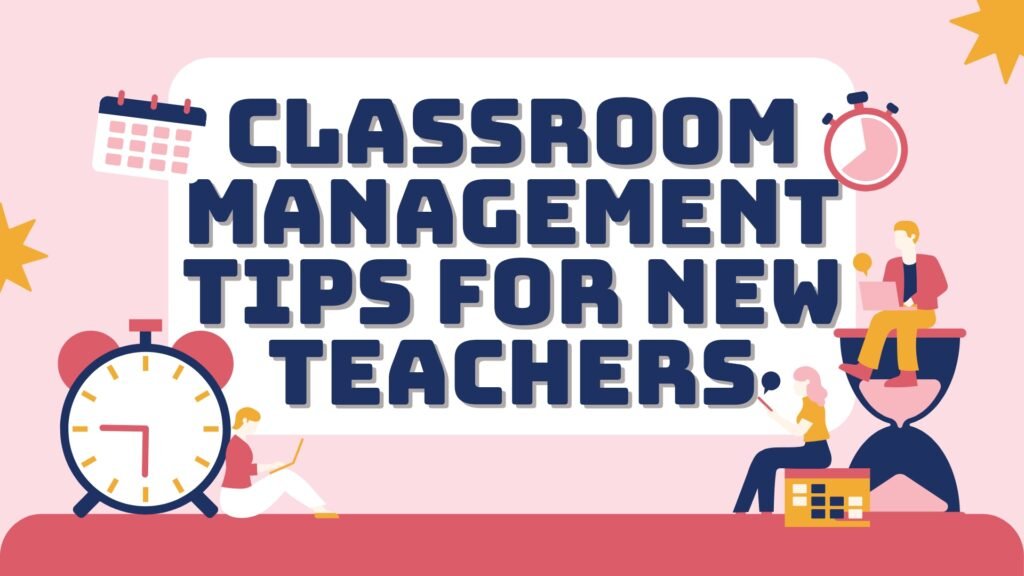Classroom management is an important skill for new teachers. It can greatly affect how students behave and the overall learning environment. Here are ten helpful strategies that can assist new educators in creating a positive and productive classroom atmosphere.
1. Establish Clear Expectations
Setting clear expectations at the start of the school year is very important. Students need to know what is expected of them regarding their behavior and schoolwork. To do this, teachers can work with their students to create a list of rules. This teamwork helps students feel responsible and accountable for their actions. As a result, they are more likely to follow the rules and meet their expectations.

2. Build Positive Relationships
Building strong relationships with students creates a supportive classroom environment. Teachers showing real interest in their students’ lives helps build trust and respect. Simple actions, such as greeting students at the door or asking about their hobbies, can strengthen these connections. As a result, students are more likely to participate positively in class activities.
3. Utilize Non-Verbal Communication
Non-verbal communication can be very useful for managing a classroom. Teachers can use their body, gestures, and facial expressions to get messages across without speaking. For example, making eye contact with students can help keep them focused. Additionally, a simple nod of the head can encourage students to participate. These small, quiet signals often work well to reinforce the expectations set in the classroom.
4. Implement Consistent Routines
Having routines in place provides structure and predictability for students. When teachers establish daily procedures for different activities, like coming into the classroom, handing in assignments, or moving from one task to another, it helps reduce confusion and disruptions. Additionally, being consistent with routines helps students feel safe and comfortable. As a result, they can focus better and engage more fully in their learning.
5. Foster a Sense of Community
Creating a sense of community in the classroom helps promote respect and teamwork among students. Teachers can encourage group work and peer support, which allows students to learn from each other. Activities that focus on teamwork not only improve social skills but also help reduce disruptive behavior. This happens because a supportive environment makes students feel valued and connected to one another.
Want more information? Click here to read “How to Handle Disruptive Behavior?”
6. Use Positive Reinforcement
Positive reinforcement is a helpful way to encourage good behavior in students. When teachers recognize and reward good behavior—like giving verbal praise, stickers, or small privileges—it motivates students to keep acting that way. This method helps create an atmosphere where students feel appreciated and valued for their efforts. As a result, they are more likely to continue showing positive behaviors in the classroom.
7. Adapt Instruction to Meet Diverse Needs
Every student learns differently; therefore, adapting instruction to accommodate various learning styles is vital. Incorporating visual aids, hands-on activities, and group discussions ensures that all students can engage with the material effectively. By recognizing individual strengths and weaknesses, teachers can tailor their teaching methods to enhance overall student success.
8. Address Issues Privately
When behavioral issues arise, addressing them privately rather than publicly can help maintain student dignity and trust. One-on-one discussions allow teachers to provide personalized feedback without embarrassing the student in front of peers. This approach not only resolves conflicts but also strengthens the teacher-student relationship.
9. Maintain Flexibility
While routines are important, flexibility is equally essential in classroom management. Unexpected events may disrupt planned activities; therefore, teachers should be prepared to adapt their lessons as needed. Having backup activities or being willing to adjust plans on the fly demonstrates resilience and keeps students engaged even when things do not go as planned.
10. Seek Support from Mentors
New teachers should not hesitate to seek guidance from experienced colleagues or mentors. Engaging in mentorship programs allows novice educators to gain insights into effective classroom management strategies tailored to their specific challenges. Regular discussions with mentors can provide valuable feedback and encouragement throughout the teaching journey.
Conclusion
In short, effective classroom management can be done by using different strategies that focus on structure, building relationships, and being flexible. By setting clear rules and encouraging positive communication with students, new teachers can create a classroom where everyone is engaged and learning well.
As you think about these tips, consider how you can use them in your classroom. Keep in mind that every classroom is different, so adjusting these strategies will be important for your success as a teacher.
If you want to develop your teaching skills further or connect with other educators for support, consider joining The Business Cluster today! Together we can build a community of empowered teachers ready to make a difference in their classrooms!